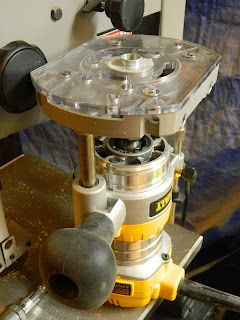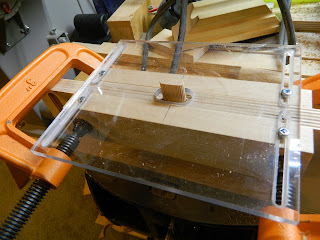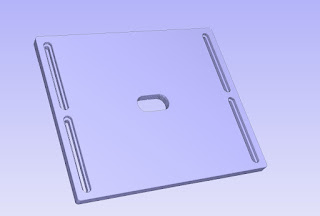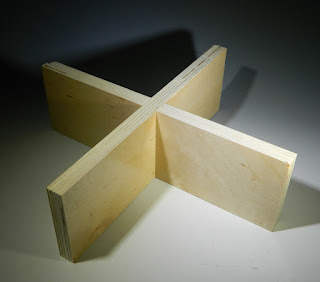In the years before flat LCD monitors came to be we had boxy analog CRT monitors to view the content of our computers with. Over the years I designed and made several desks and cabinets to hold the PCs and Monitors and Printers used. Most had some cable management built in. The cables needed then are still the cables needed now and have always been the eyesore that came with PC use.
When I was in grad school in 1987 I designed this desk/cabinet for myself. It was a challenge to hide away the aesthetically distracting PC parts but make them available when needed.
 |
| Antique Computer Cabinet |
This photo is the only surviving evidence of this project. The project was on display at the 1988 IWF Design Emphasis competition where it won first place in the graduate category. The drawer with the PC front showing also holds the keyboard that can be pulled out and placed on the desktop. The monitor can close up flush with the cabinet face when not needed. A hinging up top door and another door from the side can close down to hide the dot-matrix printer. A shelf below the printer held paper to feed into the printer through a slot above. Monitor and printer cables are thoughtfully routed through the hollow left post that supports the upper cabinet. They arrive in the rear of the lower cabinet to plug into a power strip or the rear ports of the PC. There is a rear panel that pops out to access the rear of the PC and all cable connections.
The desk top and cabinet panels are birch veneered plywood. All edging was hard maple. The desktop is a 5' section from one 8' long piece. The 3' section left became an alternate top that could replace the long top for a more compact installation. Both used snaps on their end to snap to the cabinet posts. The smaller top didn't need a leg support and would simply cantilever off the cabinet edge.
The leg post under the desk top was turned on the lathe. It started as three 120 degree sections so tapered slots for the feet could be routed out before being glued together to turn. The feet wedge into these slots and support the post a couple inches off the floor. The post top sockets into a lathe-turned flange screwed into the bottom off the table top. The post with feet could be rotated to point any direction The post and feet come apart easily from the top and each other to make it much simpler to transport.
The bottom of the posts had wheels attached. With the desk top detached the cabinet could be tipped back and wheeled around. The PC parts inside could remain connected while being moved. A single plug to external power was the only visible cable to deal with.
This cabinet with the smaller top lived at a sister's home for a few years. It held her computer, monitor, and printer. When she didn't need it anymore I retrieved it.
The cabinet was taken apart several years back and the pieces have provided material for other projects.
I still have the large table top. It replaced the cheap plastic table top of a folding table and has become a project table I can set up when needed in my shop. Legs fold up and the table stores standing flat against a wall.
Questions and comments are encouraged.
4D


















































